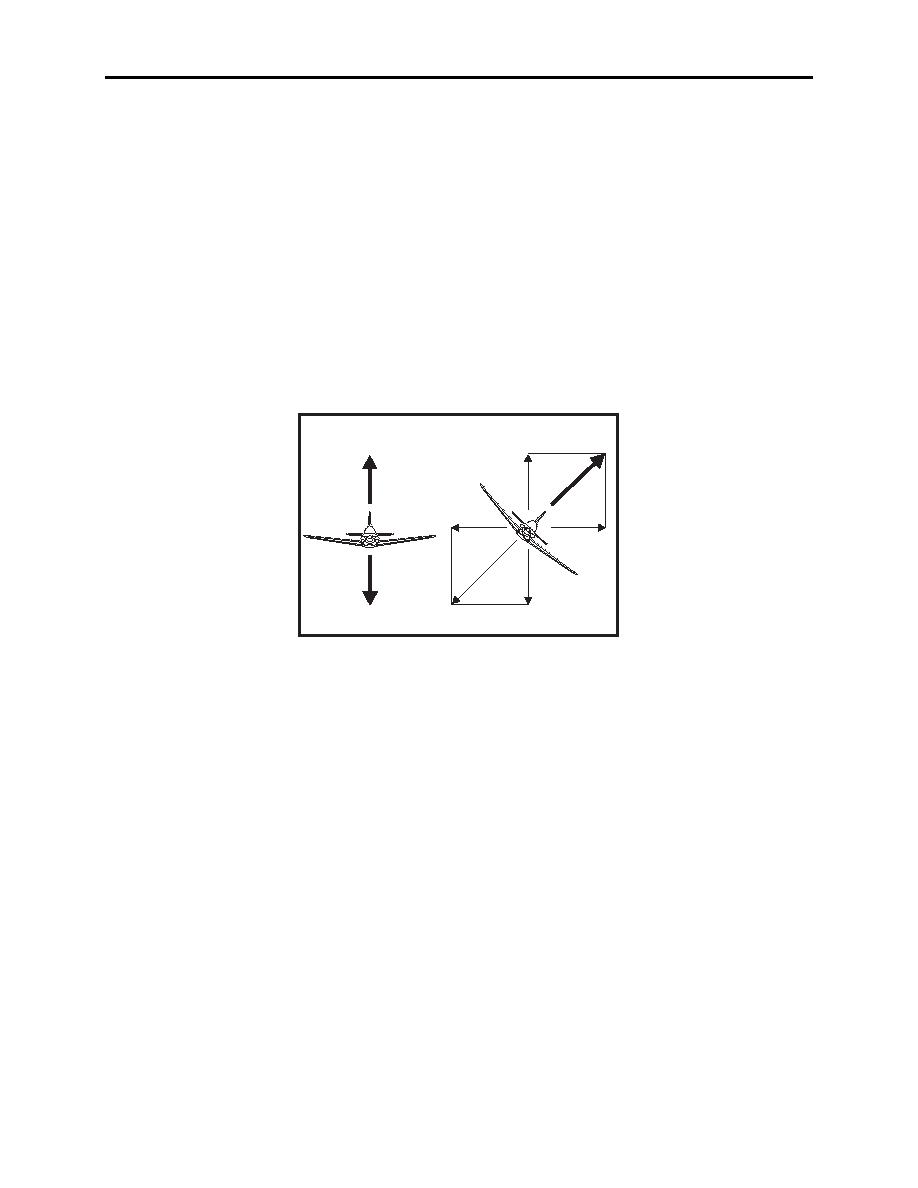 |
|||
|
|
|||
|
|
|||
| ||||||||||
|
|  CHAPTER FOUR
T-34C CONTACT
407.
TURNS
The turn is the most complex of all the basic flight maneuvers. During the turn, coordinated use
of all three flight controls is required. Although there are other important considerations, the
first requirement for the turn is that balanced flight be maintained.
You will recall that when an airplane is flying straight and level, the total lift is acting
perpendicular to the wings and to the earth. As the airplane is banked into a turn, the lift then
becomes the resultant of two components. One, the vertical component, continues to act
perpendicular to the earth and opposes gravity. The other, the horizontal component, acts
parallel to the earth's surface and opposes centrifugal force caused by the turn. These two lift
components act at right angles to each other, causing the resultant lifting force to act
perpendicular to the banked wings of the airplane. It is this lifting force that actually turns the
airplane, not the rudder, as misinformed pilots might believe. These facts are illustrated in
Figure 4-5.
Vertical Component
Vertical Component
of Lift
of Lift
al
ot ft
T i
L
Horizontal
Centrifugal
Component
Force
or
ct )
Fa rce
ad Fo
Lo (G-
Weight
Weight
Figure 4-5 Turn-Bank Lift Vectors
When applying aileron to bank the airplane, the depressed or lowered aileron (on the rising wing)
produces a greater drag than the raised aileron (on the lowering wing). This increased aileron
drag, which is called adverse yaw, tends to yaw the airplane towards the rising wing, or opposite
to the desired direction of turn, while the banking action is taking effect. To counteract the
yawing tendency, rudder pressure must be applied simultaneously in the desired direction of
turn. This produces a coordinated turn.
After the bank has been established in a theoretically perfect turn in smooth air, all pressure on
the aileron control may be relaxed. The airplane will remain at the bank selected with no further
tendency to yaw since there is no longer a deflection of the ailerons. As a result, pressure may
also be relaxed on the rudder pedals, and the rudder allowed to streamline itself with the
direction of the air passing it. If pressure is maintained on the rudder after the turn is established,
the airplane will tend to skid to the outside of the turn. If a definite effort is made to center the
rudder rather than let it streamline itself to the turn, it is probable that some opposite rudder
pressure will be exerted inadvertently. This would tend to force the airplane to yaw opposite its
original turning path. As a result, the airplane would tend to slip to the inside of the turn. The
ball in the turn indicator will be displaced off-center whenever the airplane is skidding or
slipping.
4-10
FUNDAMENTAL FLIGHT CONCEPTS
|
|
Privacy Statement - Press Release - Copyright Information. - Contact Us |